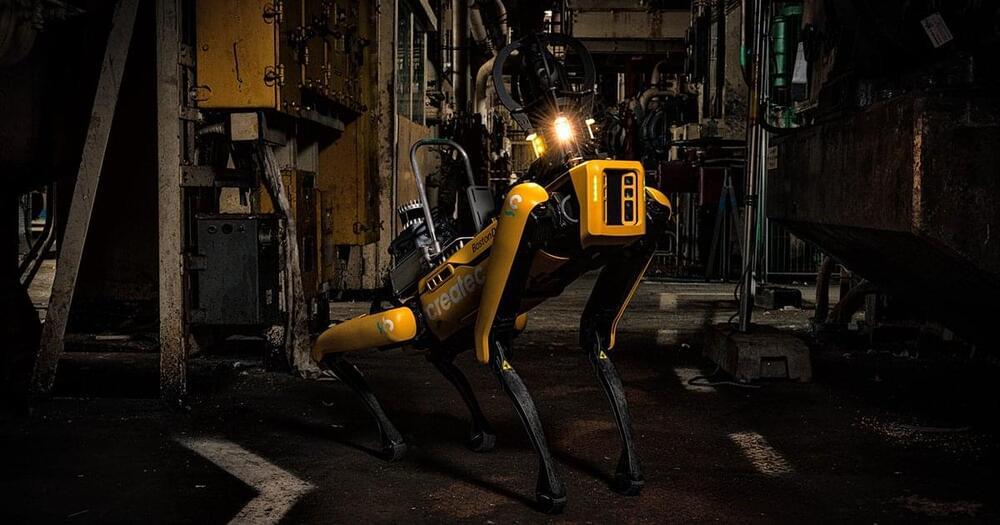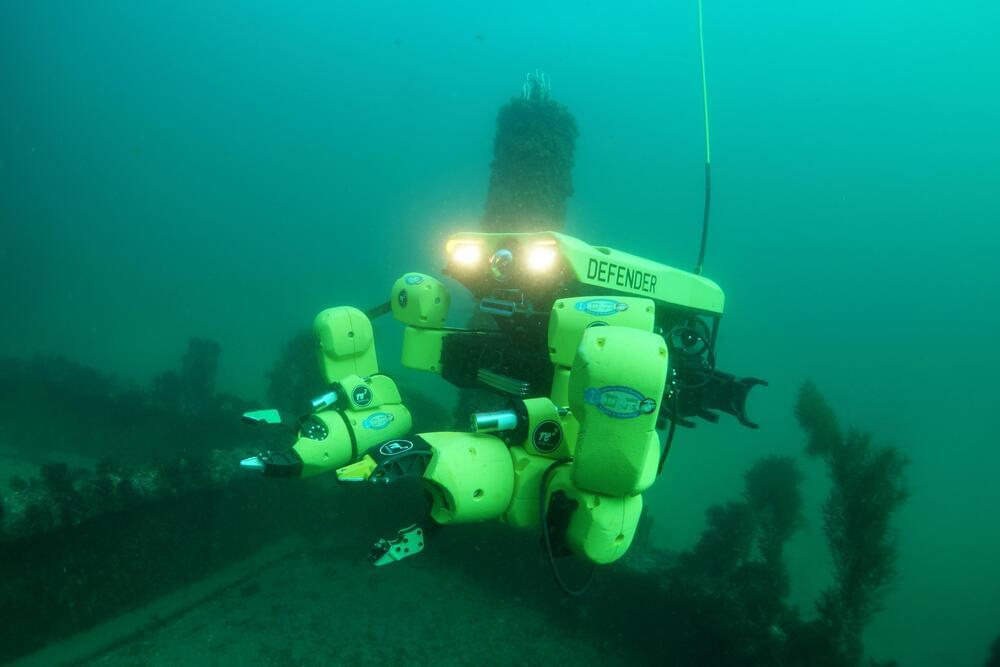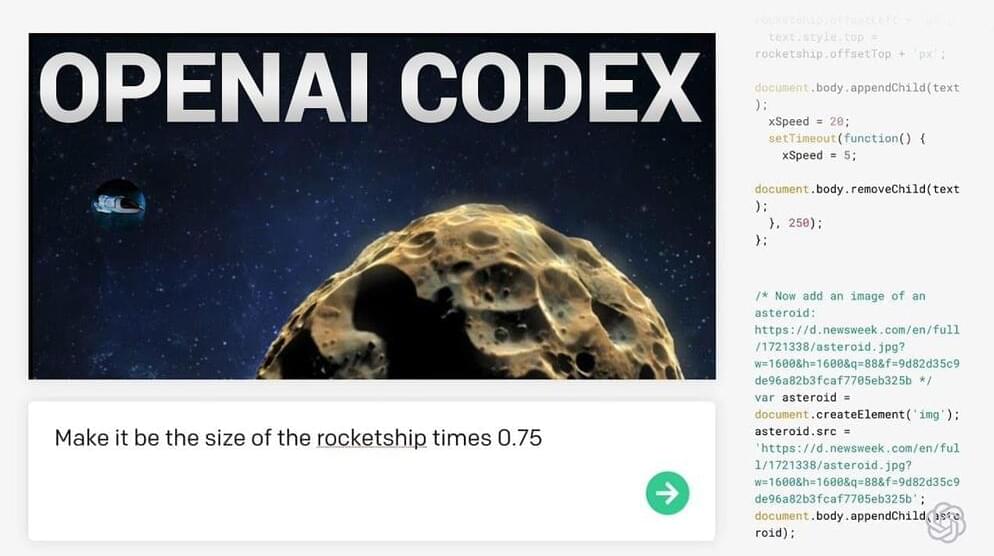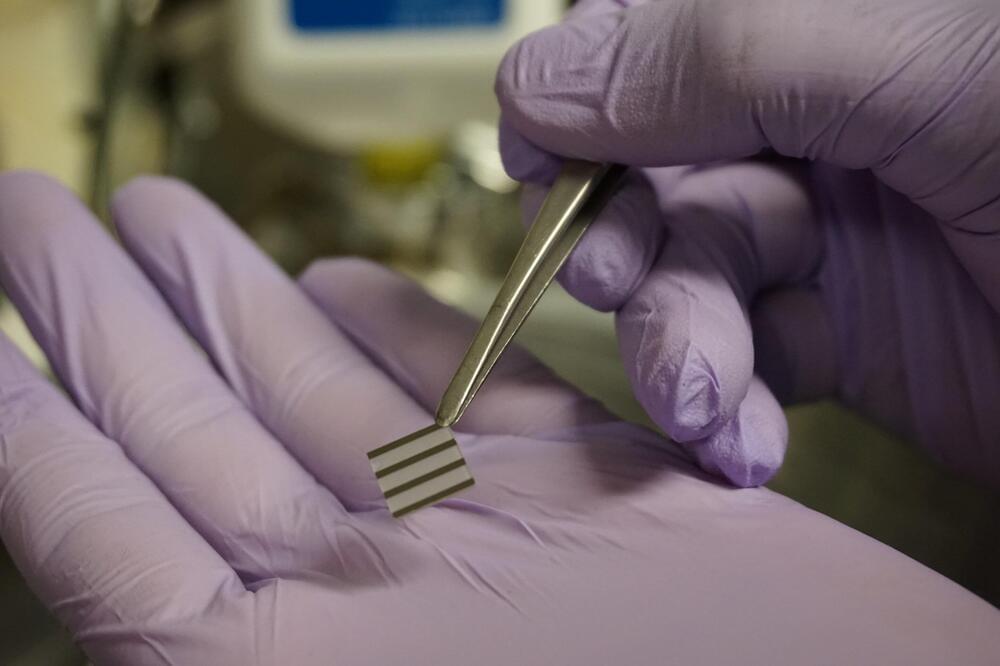Each gravitational lens could help unravel the mysteries of dark matter.



As demand for green energy increases, Spot can help nuclear operators improve uptime and reduce employees dosage by automating hazardous inspections. Learn more… See More.
Spot, an agile mobile robot, helps the nuclear power industry perform inspection tasks to improve operational data and reduce dosage for employees.

It goes without saying that the neutralizing of underwater mines is a dangerous task – definitely one that you’d avoid sending a scuba diver to do, if at all possible. That’s why Pittsburgh-based RE2 Robotics is designing a robotic system to do the job.
Drawing on a US$9.5-million contract recently awarded by the US Office of Naval Research (ONR), RE2 will act as the systems integrator for the autonomous robotic Maritime Mine Neutralization System (M2NS).
In a nutshell, that system will consist of a set of RE2’s Sapien Sea Class robotic arms, mounted on a Defender ROV (remotely operated vehicle) manufactured by Pennsylvania-based VideoRay. M2NS will also incorporate RE2’s Detect computer vision software for locating mines, and its Intellect autonomy software for placing “neutralizing devices” on them.

https://www.youtube.com/watch?v=81rBzfbFLiE&t=4s
I predicted that by 2030 you would be able to tell an AI assistant to build brand new books, movies, TV, video games, etc… on demand. That has now arrived, although in its Very Early stages. Look forward to building whatever media you want, or changing existing media into whatever you want.
“OpenAI Codex: Just Say What You Want!”
❤️ Check out Perceptilabs and sign up for a free demo here: https://www.perceptilabs.com/papers.
📝 The paper “Evaluating Large Language Models Trained on Code” is available here:
https://openai.com/blog/openai-codex/
Codex tweet/application links:
Explaining code: https://twitter.com/CristiVlad25/status/1432017112885833734
Pong game: https://twitter.com/slava__bobrov/status/1425904829013102602
Blender Scripting: https://www.youtube.com/watch?v=MvHbrVfEuyk.
GPT-3 tweet/application links:
Website layout: https://twitter.com/sharifshameem/status/1283322990625607681
Plots: https://twitter.com/aquariusacquah/status/1285415144017797126?s=12
Typesetting math: https://twitter.com/sh_reya/status/1284746918959239168
Population data: https://twitter.com/pavtalk/status/1285410751092416513
Legalese: https://twitter.com/f_j_j_/status/1283848393832333313
Nutrition labels: https://twitter.com/lawderpaul/status/1284972517749338112
User interface design: https://twitter.com/jsngr/status/1284511080715362304
🙏 We would like to thank our generous Patreon supporters who make Two Minute Papers possible:
Aleksandr Mashrabov, Alex Haro, Andrew Melnychuk, Angelos Evripiotis, Benji Rabhan, Bryan Learn, Christian Ahlin, Eric Haddad, Eric Martel, Gordon Child, Ivo Galic, Jace O’Brien, Javier Bustamante, John Le, Jonas, Kenneth Davis, Klaus Busse, Lorin Atzberger, Lukas Biewald, Matthew Allen Fisher, Mark Oates, Michael Albrecht, Nikhil Velpanur, Owen Campbell-Moore, Owen Skarpness, Ramsey Elbasheer, Steef, Taras Bobrovytsky, Thomas Krcmar, Timothy Sum Hon Mun, Torsten Reil, Tybie Fitzhugh, Ueli Gallizzi.
If you wish to appear here or pick up other perks, click here: https://www.patreon.com/TwoMinutePapers.
Meet and discuss your ideas with other Fellow Scholars on the Two Minute Papers Discord: https://discordapp.com/invite/hbcTJu2
Károly Zsolnai-Fehér’s links:
Instagram: https://www.instagram.com/twominutepapers/
Twitter: https://twitter.com/twominutepapers.
Web: https://cg.tuwien.ac.at/~zsolnai/

Artificial intelligence (AI) could be the most transformative technology in the history of mankind—and we may not even see much of this sweeping change coming. That’s because we often overestimate what technologies can do in five years, and underestimate what they will be able to do in 20.
As I’ve traveled the world talking about this subject, I’m constantly asked, “what will the future hold for humans and AI?” This is an essential question for this moment in history. Some believe that we’re in the midst of an “AI bubble” that will eventually pop, or at least cool off. Those with more drastic and dystopian views believe everything from the notion that AI giants will “hijack our minds” and form a utopian new race of “human cyborgs”, to the arrival of an AI-driven apocalypse. Each of these projections may be born out of genuine curiosity or understandable fear, but they are usually speculative or exaggerated. They miss the complete picture.
Speculation varies wildly because AI appears complex and opaque and it is no wonder that the general view about AI has turned cautious—and even negative. To be sure, aspects of AI development deserve our scrutiny and caution, but it is important to balance these concerns with exposure to the full picture of this crucially important technology’s potential. AI, like most technologies, is inherently neither good nor evil. And I believe that, like most technologies, AI will eventually produce more positive than negative impacts in our society.

A new study has found that a material(nickel oxide, a quantum material) can mimic the sea slug’s most essential intelligence features. The discovery is a step toward building hardware that could help make AI more efficient and reliable.
For artificial intelligence to get any smarter, it needs first to be as intelligent as one of the simplest creatures in the animal kingdom: the sea slug.
A new study has found that a material can mimic the sea slug’s most essential intelligence features. The discovery is a step toward building hardware that could help make AI more efficient and reliable for technology ranging from self-driving cars and surgical robots to social media algorithms.
The study, publishing this week in the Proceedings of the National Academy of Sciences, was conducted by a team of researchers from Purdue University, Rutgers University, the University of Georgia and Argonne National Laboratory.

Pandemic lockdown forces a new perspective on designs for futuristic AI-based computing devices.
Isaac Newton’s groundbreaking scientific productivity while isolated from the spread of bubonic plague is legendary. University of California San Diego physicists can now claim a stake in the annals of pandemic-driven science.
A team of UC San Diego researchers and colleagues at Purdue University have now simulated the foundation of new types of artificial intelligence computing devices that mimic brain functions, an achievement that resulted from the COVID-19 pandemic lockdown. By combining new supercomputing materials with specialized oxides, the researchers successfully demonstrated the backbone of networks of circuits and devices that mirror the connectivity of neurons and synapses in biologically based neural networks.

A Shortfall of Gravitas: SpaceX’s new drone ship detailed
The ship supported its first mission on August 29. This was the 23rd Commercial Resupply Services mission, the latest in a series of launches for NASA that sends cargo to the International Space Station.
A Shortfall of Gravitas is a notable upgrade over previous ships. SpaceX explained during the mission launch livestream that it improves over its predecessors with a fully autonomous operation procedure. That means it can travel to sea, find its position, receive the rocket, grab the rocket with the “octograbber” robot and return it to land — all autonomously.


First there was gunpowder. Then nuclear weapons. Next: artificially intelligent weapons.